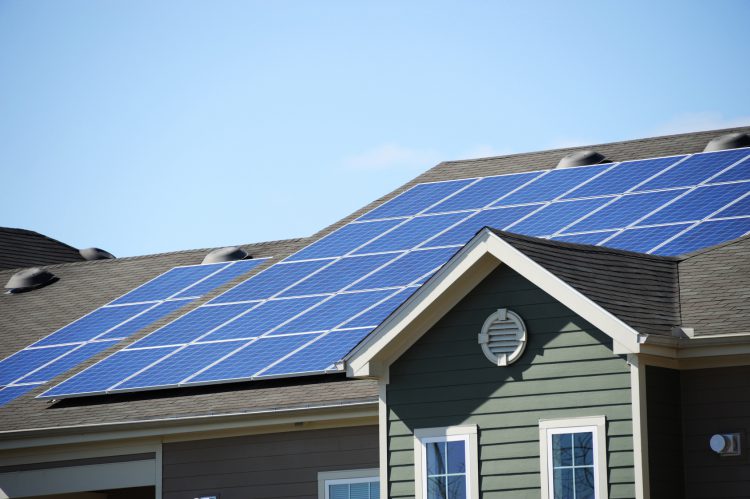Ontario's Climate Change Action Plan and (Near) Net Zero Homes

The government of Ontario recently revealed its five-year Climate Change Action Plan ("CCAP"). Under the recently enacted Climate Change Mitigation and Low Carbon Economy Act, 2016 (the "Climate Change Act"), the Ontario government is required to prepare a climate change action plan that details actions designed to modify behavior to enable Ontario to achieve its targets for the reduction of GHG emissions relative to 1990 levels:
- 15% reduction by the end of 2020
- 37% reduction by the end of 2030
- 80% reduction by the end of 2050
To help achieve the emission reduction goal, the CCAP includes a number of measures targeted at modifying the family home, including adopting the concept of the "near net zero carbon home" ("NZ home") and encouraging the adoption of electric vehicles.
Near Net Zero Carbon Homes
NZ homes are sometimes defined synonymously with "net zero homes" or "net zero energy homes." NZ homes have two components: (1) improved energy efficiency; and (2) generation of renewable energy. According to the definition provided by Natural Resources Canada, an NZ home will produce as much energy as it consumes. Presumably, a "near net zero carbon home" will produce as much energy as it consumes with near zero carbon emissions.
Improved Energy Efficiency
NZ homes are designed to be highly energy efficient. They consume less energy than conventional homes using a variety of conservation techniques, including improving the building envelope with better insulation and draft sealing. Other techniques include improved window glaze, insulated piping, more efficient appliances, more efficient LED lighting, and more efficient HVAC systems.
Renewable Energy Generation
NZ homes generate renewable energy to offset energy consumption. Common methods of renewable generation at the residential level are solar for electricity and heating and geothermal for heating. Where a NZ home relies on solar electricity generation, it may also include a battery storage system, such as the Tesla Powerwall, to bridge the gap between peak solar (the middle of the day) and peak demand (the evening).
In addition to using renewable generation to offset energy consumption, NZ homes return excess electricity to the grid. Ontario's Ministry of Energy is currently undertaking a review of the province's programs for individuals who generate their own renewable energy (i.e., net metering and microFIT). The proposed program would allow consumers to use their own locally generated renewable electricity and export electricity to the grid where generation exceeds consumption. Consumers would be charged retail rates for their electricity consumption less the amount of electricity generated. Any net excess generation would be credited at a price that reflects the project's value to Ontario's electricity system.
Incentives for Near Net Zero Carbon Homes
Under the CCAP, the Ontario government will provide rebates to individuals who purchase or build NZ homes. Builders estimate that the current incremental cost for building a $300,000 net zero single family home is in the range of an additional 10-15%, or $30,000 to $45,000. Without specifying the size of a house, Natural Resources Canada estimates the cost at $100,000 to $150,000. Ontario intends to allocate $180 to $220 million from the Greenhouse Gas Reduction Account ("GGRA")[1] to the NZ home rebate. The rebate is intended to reduce the up-front costs to homebuyers and to encourage the construction of high efficiency homes.
Lower-Carbon Building Code Standards
Ontario also intends to update the Ontario Building Code with long-term energy efficiency targets for new NZ homes. Initial changes will come into effect by 2020, and the rest will be effective by 2030 at the latest. No details of the proposed changes to the Building Code are provided in the CCAP, however, the government does state that it intends to hold consultations on the matter.
Electric Vehicles and NZ Homes
Another modification to the home described in the CCAP relates to electric vehicles. The CCAP will extend the rebate program to 2020 for leasing or buying eligible electric vehicles and for the installation of home charging stations. As well, all new homes and townhomes with garages will be required to include a 50-amp, 240-volt plug for the purpose of charging an electric vehicle.
In order to further encourage the adoption of electric vehicles at home, Ontario intends to establish a four-year free overnight electric vehicle-charging program for residential and multi-unit residential customers starting in 2017. Ontario has allocated $15 million to this program from the GGRA and intends to work with utilities to transition this program to an optional enhanced time-of-day charging program. The goal of the program would be to lower overall electricity bills for homes that charge vehicles.
[1] The GGRA will be funded from the auction and sale of emission allowances under Ontario's Cap and Trade program.
